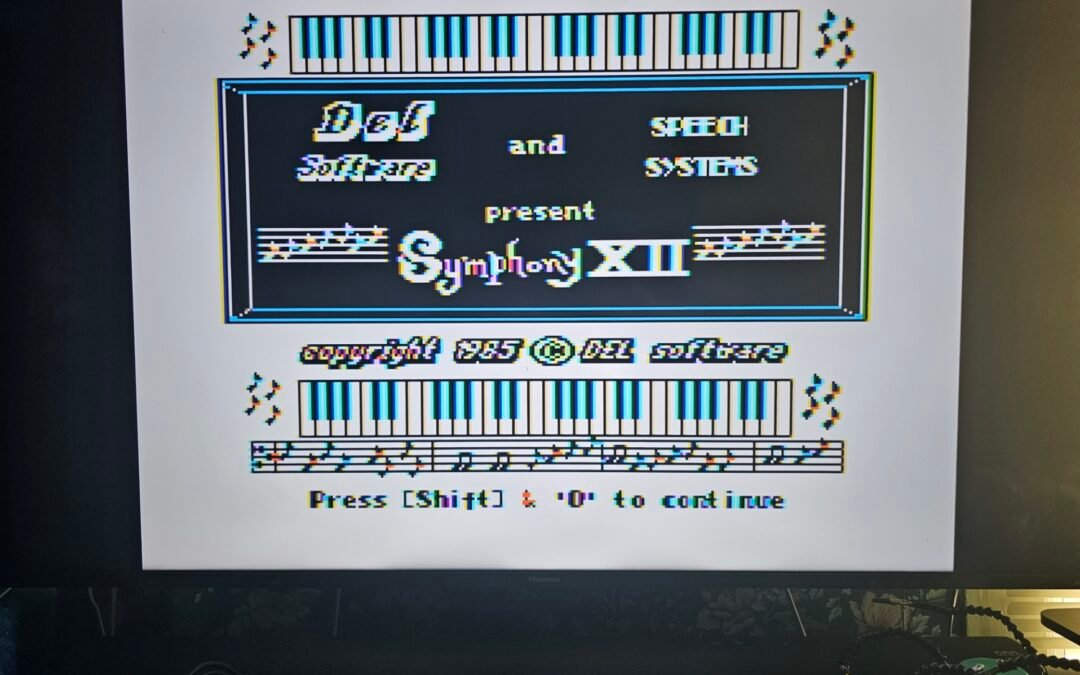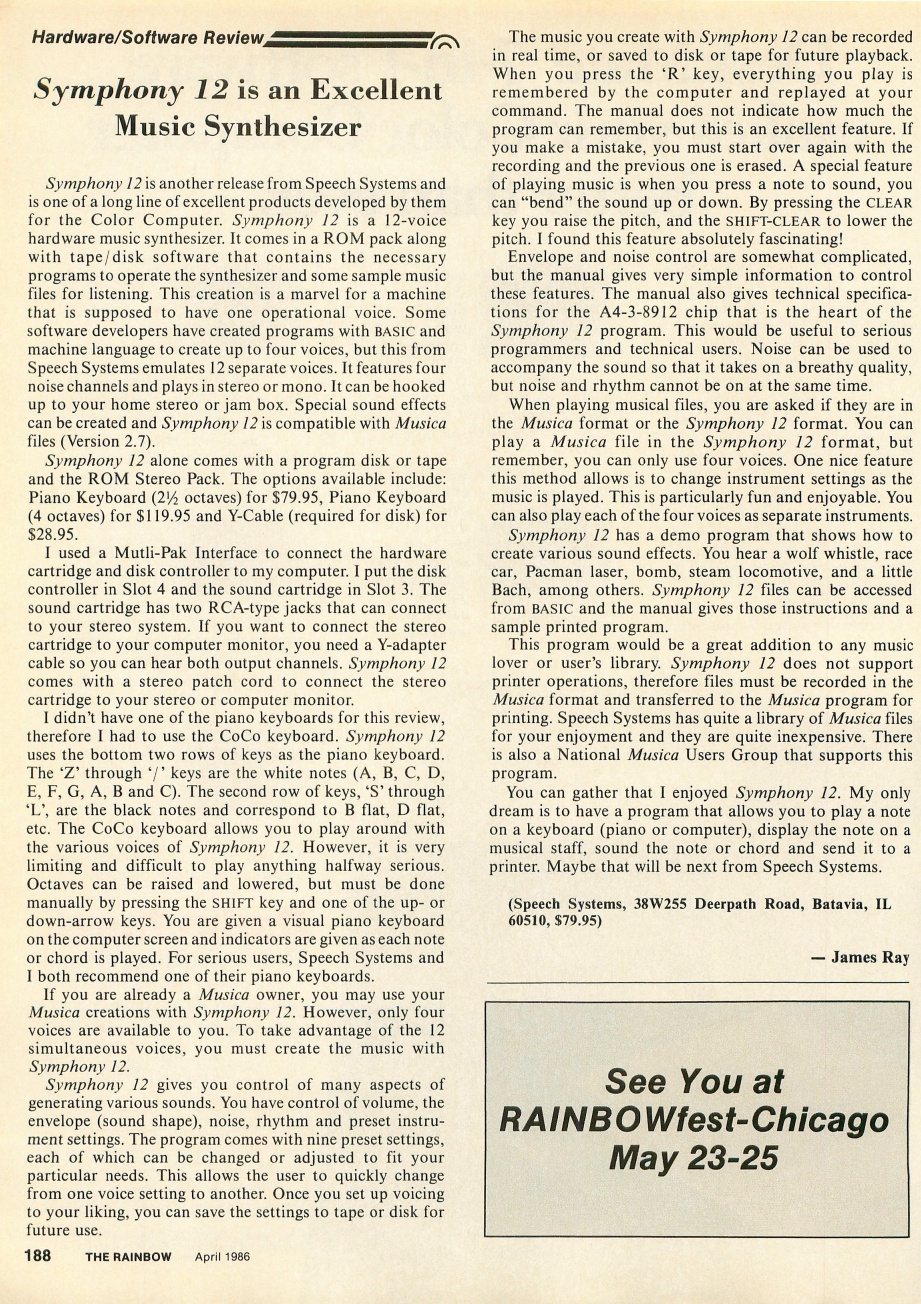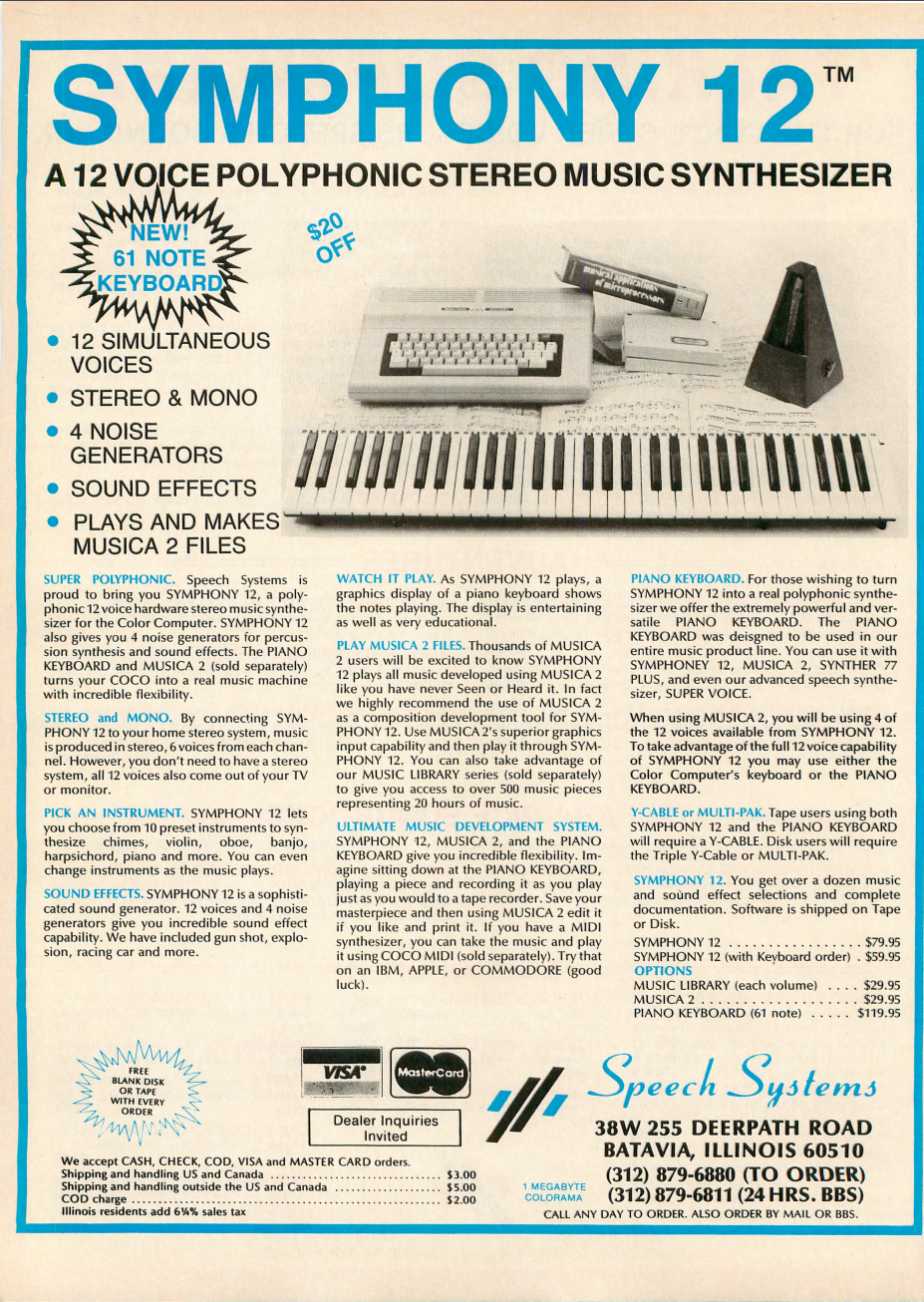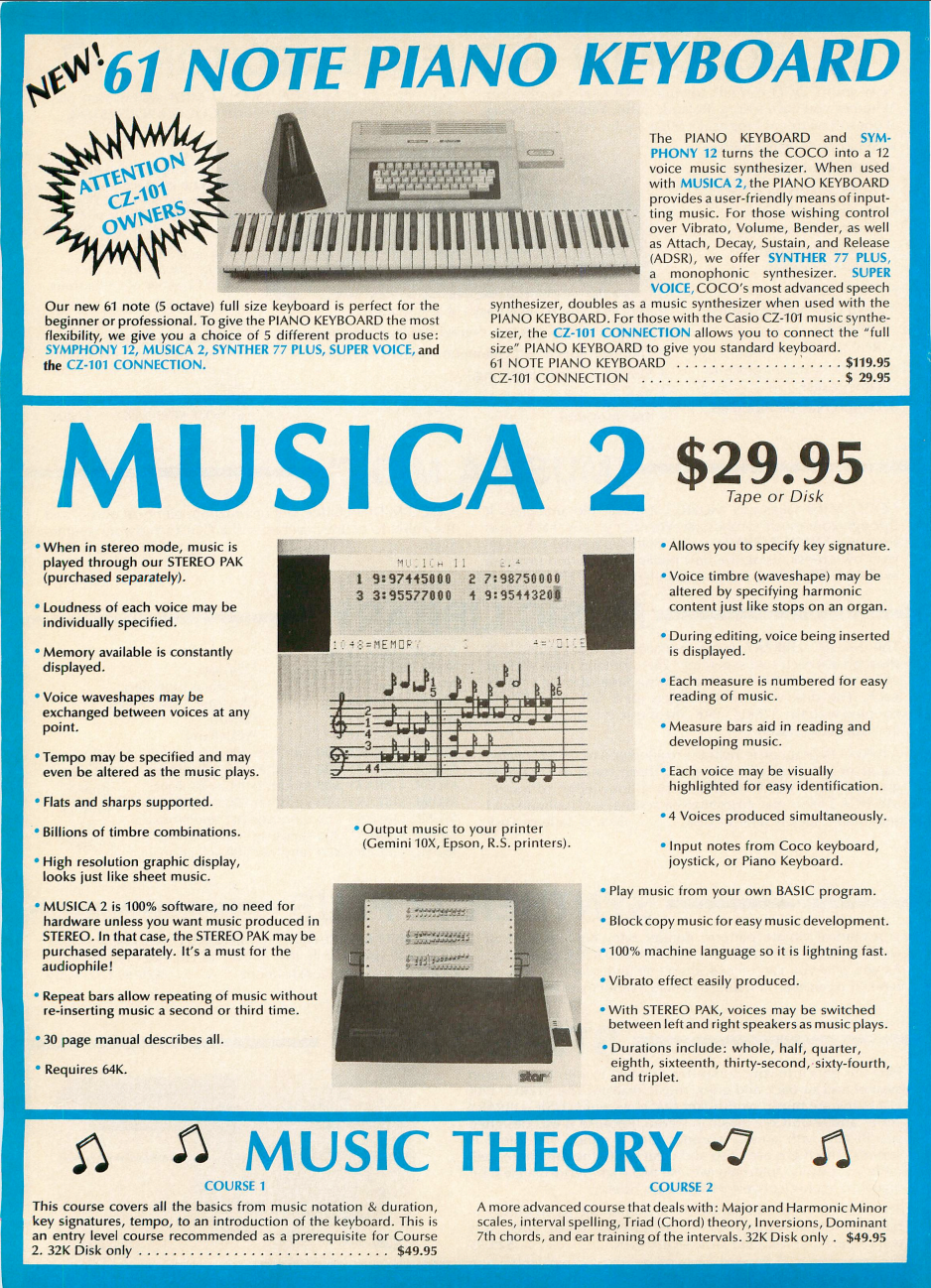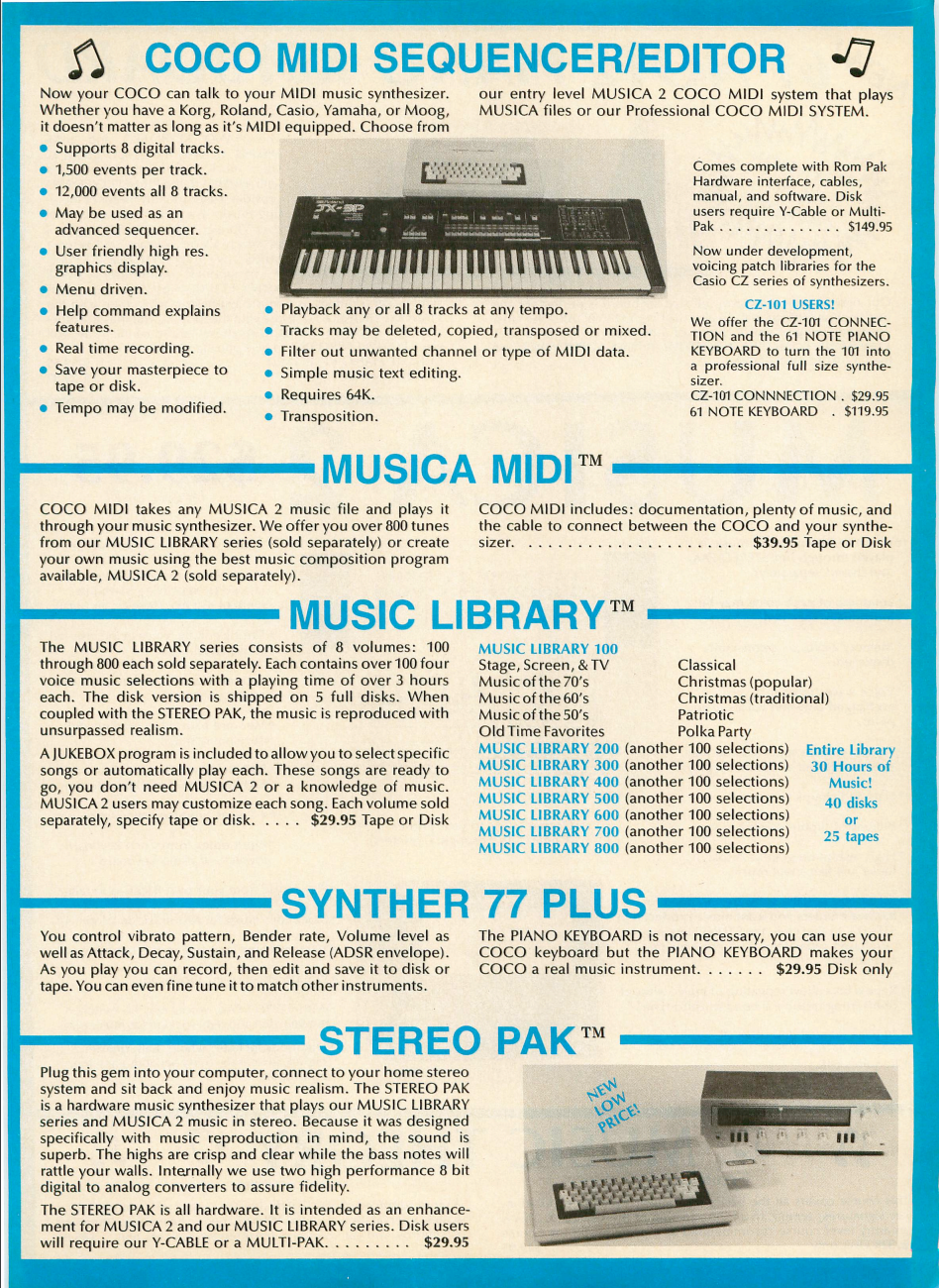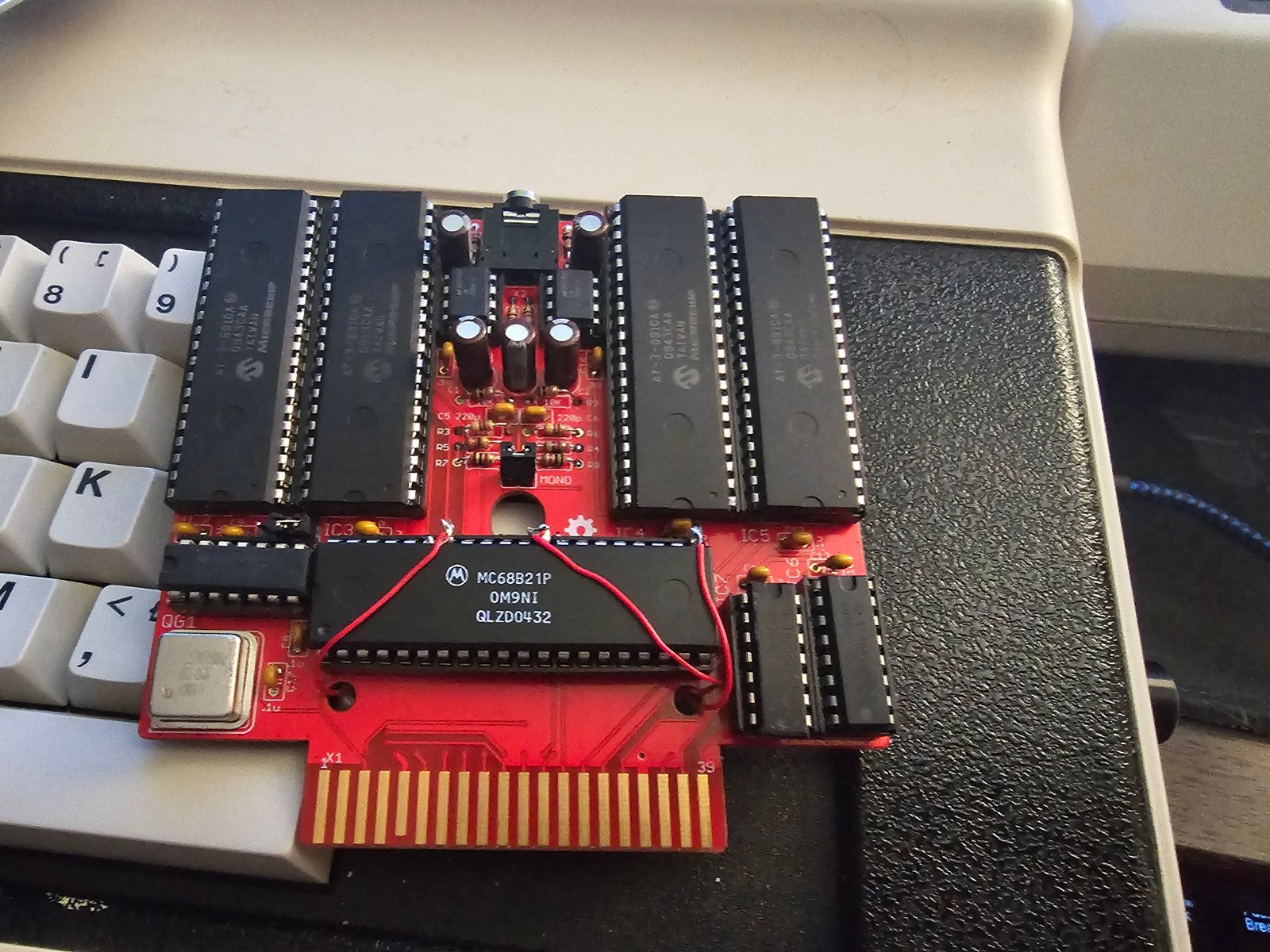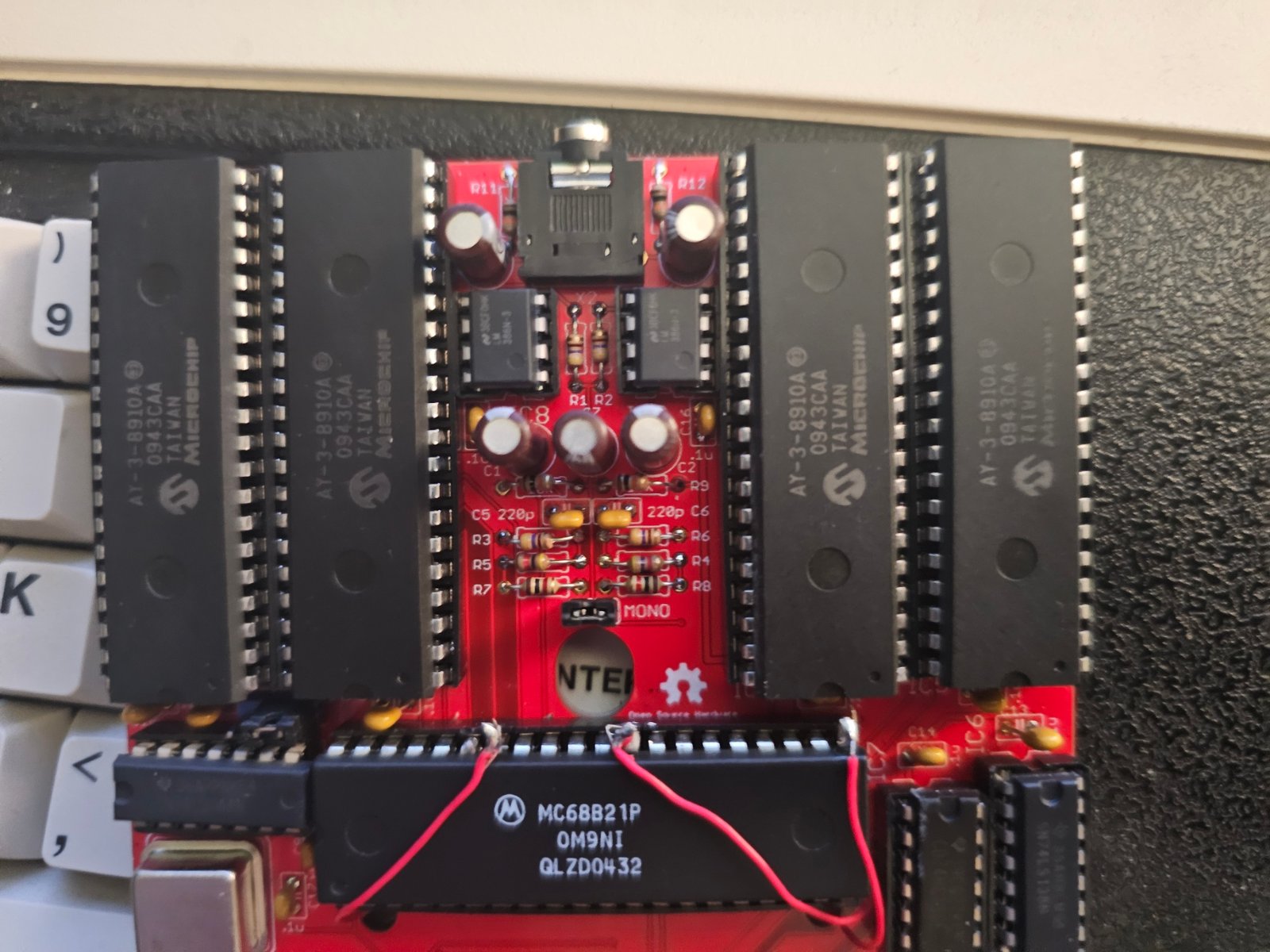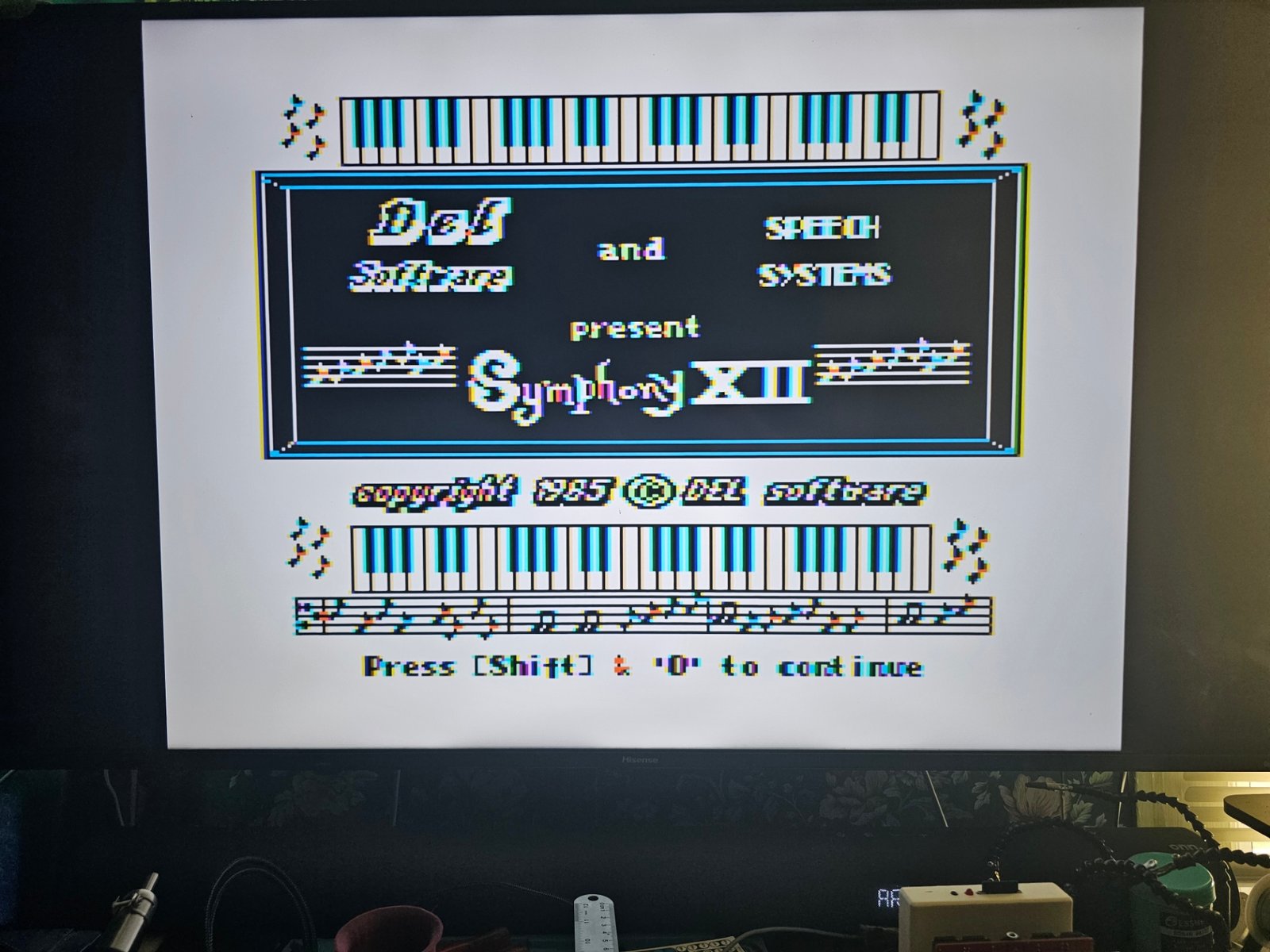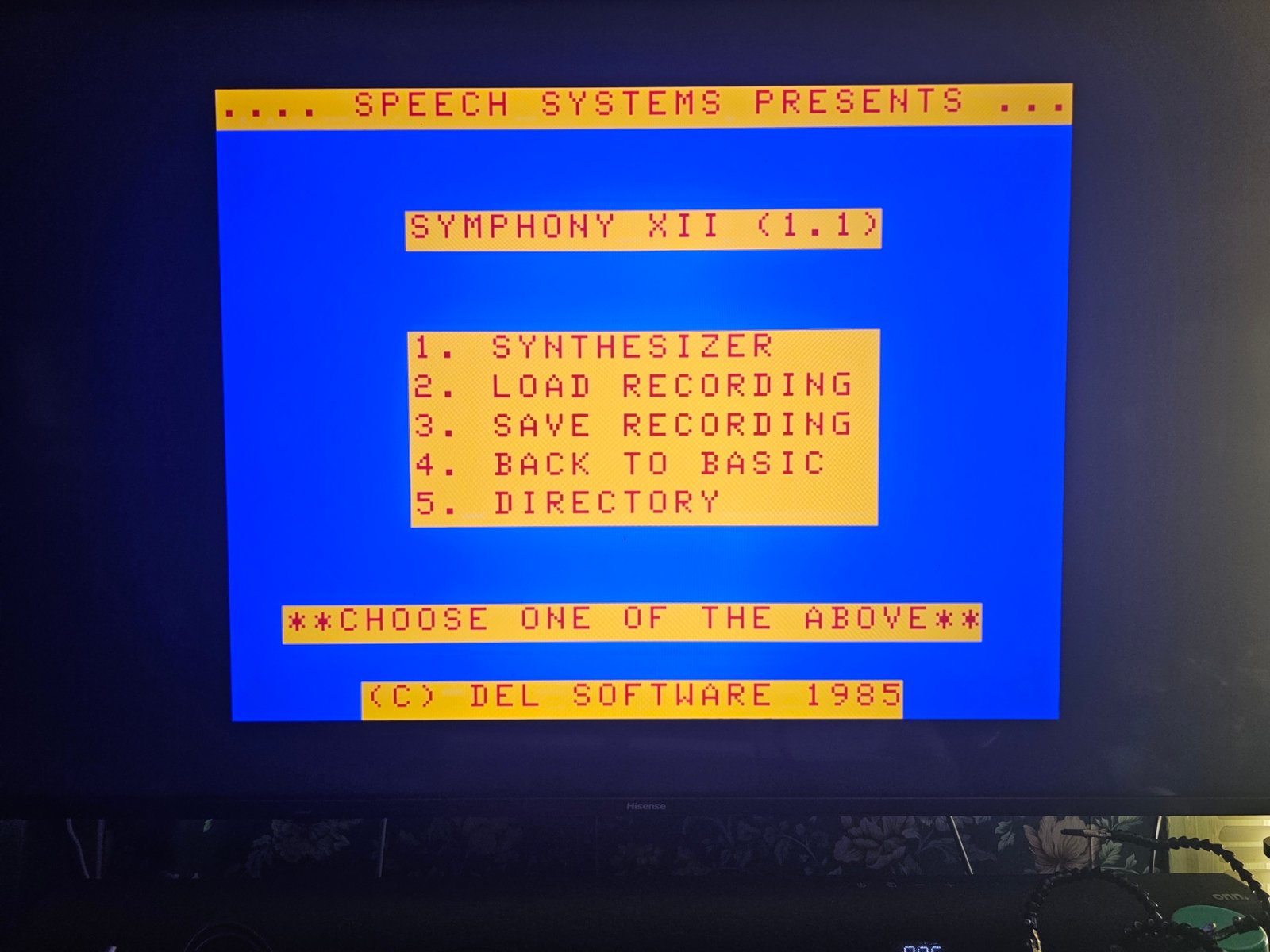Symphony 12
by Speech Systems
When it comes to sound, the stock CoCo (1, 2 or 3) are limited to the DAC. While a lot can be done with the DAC, as well as compressed audio samples, all of the coco models have been hamstrung for audio capability, when compared to their contemporaries. The Commodore 64 had the SID, Atari 8-bitters had the Pokey, and the Ti99 series had TMS9919, later SN94624.
Over the years, there have been a number of third party sound solutions for the CoCo, but I’d be surprised to find one that is more capable than the Symphony 12. It’s not just an audio card, this thing is crazy capable with the options it offered, and still does today (if you can find the keyboard). The Rainbow review from April 1986 is below.
The Symphony 12 wasn’t just a hardware card you could play sounds thru. You could compose music with it. Having several music playback features including files created in Synther77 and Musica 2, Symphony XII was quite capable, and flexible. For music composition, one option was the CoCo Keyboard itself. The better option was the piano keyboard. With the Symphony 12 card, symphony Xii software and the piano keyboard, as the speech systems ad said, you had a 12 voice, polyphonic stereo synthesizer at your fingertips. Playback of standard Musica files, while possible was and is limited to only 4 voices – which I believe was a Musica limit anyway.
The Symphony XII disk does include some files to test with, but they are Musica files. The manual even states that the engineers who developed the keyboard were not musicians, and asked customers to send in their work. All of the music files I could find that would possibly work with the Symphony XII (and the Philharmonic 12) are Musica files, and therefore will not show off the full functionality of the device. Having a keyboard to go with the device would be preferable to using the CoCo keyboard, since decoding multiple key-presses on a membrane is a tall order.
Introducing the Philharmonic 12
by go4retro
Much of the older hardware for the CoCo line has faded away. Gone are the days when you could pick up a Rainbow magazine and place an order. While amazon has made obtaining all sorts of things a next day event for some, they really haven’t kept up to date on CoCo related items ;).
In modern times, about your best hope is to pick up an Orchestra 90 or Speech and Sound cart on eBay. Sometimes at a resonable price, other times some seller thinks he’s recovered the Ark of the Covanent. And while those devices do have some capabilities, they are most definately limited. Within the last 10 years or so, there have been a number of sound enhancement options released into the wild, but like so many other hardware developments, the software has never landed. While other features have made the device useful (say integrated into an MPI), those audio features have largely gone ignored.
This is what makes the Philharmonic 12 from Jim Brain (go4retro) a very attractive device, at least for playback of files. The software and Musica files already exist. The only thing you’ll need is a soldering iron, if you buy the kit. You can buy a completed product, if you wish, for a little more. The parts kit, when I bought it, was $50.00 and it took me less than a full CoCoNation show to assemble it. And it worked! Well… once I remembered to put the CLK jumper in place. I’ll blame that on the inhalation of solder smoke.
Assembly was pretty straight forward, though I should have brought out my microscope – I took way too many pics with my phone to make sure the tiny caps and resistors were in the correct holes. Since there are a total of 13 TINY caps, I started with those. Two of one value, 11 of another value – I put those in place first. It’s common practice to start with the lowest profile components when soldering, i.e.: resistors, but I needed to get these out of the way.
Nevermind my boge wires – The chips in the kit are obviously reclaimed, as they haven’t been manufactured for years. And after inserting the the other nine IC’s with little issue, the odds caught up with me. Those wires simply connect the broken IC pins to the socket underneath.
Since there really isn’t much more to discuss, other than basic functionality, I’ll hit the high points:
-
- The Philharmonic 12 works
- It’s compatible with the Symphony XII software
- It does play MUS files in the archive that I was having issues finding a player for
- For as long as a chip supply holds out, it IS a viable option for putting older sound files to use
- I can’t help but think the same functionality could be replicated in a smaller MCU package today
- In order to fully take advantage of the package, some enterprising developer will need to come up with a piano replacement
- The coolness factor for a music file nerd is somewhere above average
With all of that out of the way, I’ll get some screenshots and videos posted below for your entertainment.

